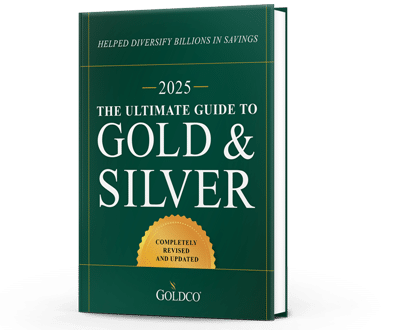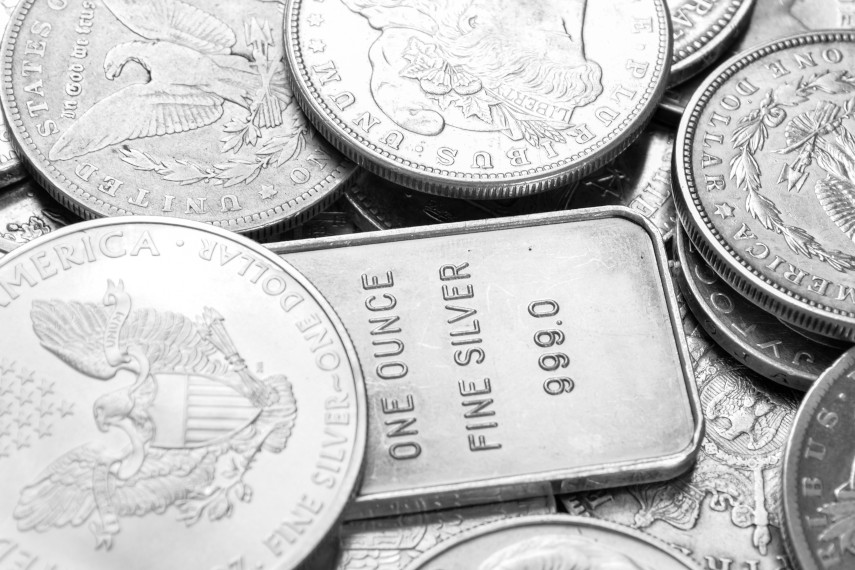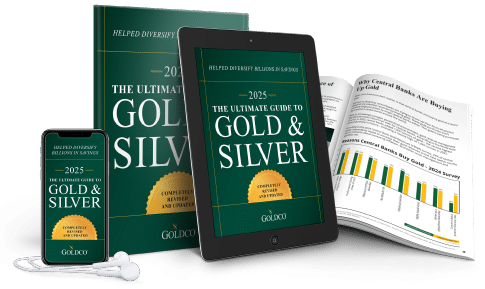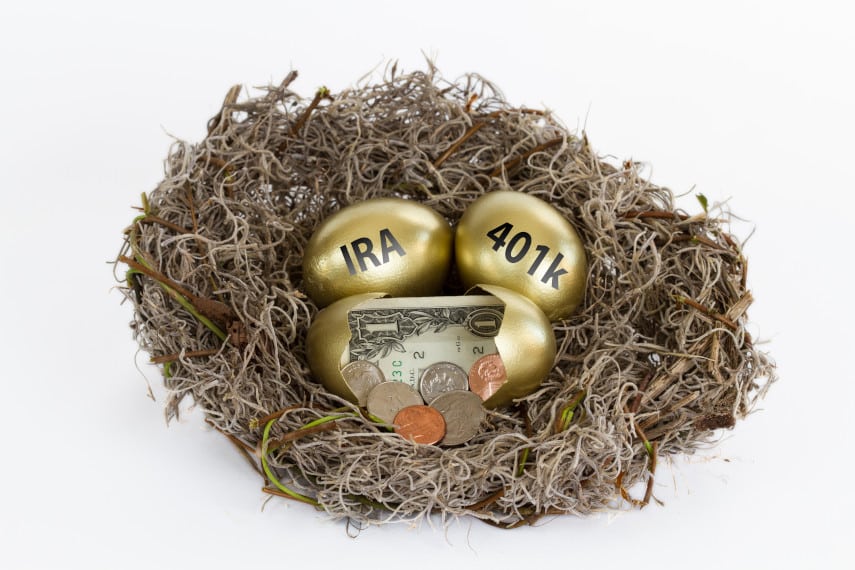
If you’re like many American workers, you’ve probably given at least some thought to retirement. Just imagine what it would be like to live according to your own schedule, doing what you want to do, and not having to answer to anyone else.
But is retirement something you think is possible for you? Is it something you’re planning for? And if so, how is your retirement planning going?
Thinking about retirement isn’t just for people in their 60s who are about to end their careers. Planning for retirement and building up the money to retire is something that takes decades of saving and a dedicated plan.
The longer you save, the longer you can put the wonders of compound interest to work for you. That means that no matter what stage of life you’re in now or where you are in your career, the longer you save for retirement, the better off you could end up financially when you do retire.
In most cases your choice of retirement savings vehicle will come down to a 401(k) or an IRA. Each has its own advantages and disadvantages, and you can even choose to open both.
If you already have retirement assets in a 401(k) that you want to place into alternative assets, you can even look into the possibility of a 401(k) to IRA rollover, such as rolling over an old 401(k) into a gold IRA.
Whatever decision you make, however, the sooner you make the decision and start saving for retirement, the better off you could be financially when you finally retire.
Quick Comparison of Gold IRA vs. 401(k)
| Characteristics |
Gold IRA
|
401(k)
|
| What It Is |
Self -directed IRA account that allows you to own physical gold coins or gold bars, or other eligible precious metals (silver, platinum, or palladium) |
Employer-sponsored retirement plan that offers saving of pre- or post-tax income through paycheck deductions |
| How to Start |
Find a gold IRA custodian and trusted partner |
Enroll in workplace 401(k) plan if your employer offers it |
| Minimum Contribution |
None, although some gold IRA partners may have a minimum threshold (e.g. $25,000) for 401(k) to IRA rollovers |
Generally none, although some workplace plans with automatic 401(k) enrollment may have minimum requirements |
| Annual Contribution Limit |
$7,000 in 2025; $8,000 for those over age 50; unlimited for IRA rollovers |
$23,500 in 2025; $31,000 for those over age 50; $70,000 for combined employer and employee contributions |
| Annual Fees |
Yes, normally flat fees that can range from $150-300 per year |
Yes, fees vary based on plan; average 401(k) plan fees are 0.49% of assets |
| Tax Benefits |
Deferred taxation on asset growth; taxes paid at distribution for assets in Traditional gold IRA; qualified distributions from Roth gold IRA can be made tax-free |
Pre-tax contributions to 401(k) reduce taxable income; tax paid on distributions from 401(k); Roth 401(k) contributions are made post-tax, and qualified distributions can be made tax-free |
| Penalties |
Distributions from Traditional IRA before age 59½ can incur taxes and 10% early withdrawal penalty, with some exceptions; contributions to Roth IRA can be taken out at any time tax- and penalty-free; non-qualified Roth IRA distributions may be subject to 10% penalty |
Early withdrawals before age 59½ generally incur taxes and a 10% penalty, with some exceptions; non-qualified withdrawals from a Roth 401(k) may incur a 10% penalty in addition to taxes on earnings |
| Rollovers and Transfers |
Traditional IRA assets can be rolled over into other IRA accounts or into 401(k) plans if those plans allow inbound rollovers; Roth IRA assets can only be rolled over into other Roth IRA accounts |
401(k) assets can be rolled over into other 401(k) plans or into IRA accounts; Roth 401(k) assets can be rolled into other designated Roth accounts or into a Roth IRA |
| Distributions |
Distributions can be made in-kind (physical metal rather than cash); RMDs required for Traditional IRA at age 73; no RMDs for Roth IRA for original account holder |
RMDs from 401(k) start at age 73 but can be delayed until retirement if you’re still working; no RMDs for Roth 401(k) for original plan holder |
3 Key Differences Between a Gold IRA and a 401(k)
- Self-Directed vs. Employer-Sponsored: Anyone eligible to open an IRA account can start a gold IRA with a gold IRA custodian. But 401(k) accounts are only available through employers that offer them, with 75% of US workers able to access workplace retirement plans.
- Types of Assets: 401(k) accounts normally offer a limited range of asset options, and are largely limited to various types of fund offerings; some 401(k) accounts may offer a brokerage option that offers stocks, bonds, etc. Gold IRAs are intended to hold physical gold coins or gold bars, but can also hold other precious metals or other assets eligible for IRA acquisition.
- Contribution Limits: Annual contributions to IRA accounts are limited to $7,000 per year in 2025, or $8,000 to those over age 50. However, rollover contributions to an IRA account from existing retirement accounts such as a 401(k), TSP, or IRA account are unlimited. Annual contributions to 401(k) accounts are $23,500 in 2025, or $31,000 for those over age 50. The limit for total combined contributions from employees and employers are $70,000 for 2025.

Advantages of a Gold IRA vs. a 401(k)
- Portfolio Diversification: Gold has traditionally been seen as an asset that can help diversify portfolios. One of the goals of portfolio diversification has been to diversify into assets that have low correlation with each other so that if one part of your portfolio loses value, other parts might not follow suit. Gold fills that role because it has a low correlation with stocks, bonds, and other conventional financial instruments.
- Inflation Hedge: Gold has also been seen as an inflation hedge, as it tends to maintain its value over time despite devaluation of currencies. The US dollar, for instance, has lost 88% of its purchasing power since 1971, while gold has gained over 10,000% in value. Gold also has a history of performing well during periods of high inflation, with the gold price posting annualized growth of over 30% per year over the course of the 1970s.
- Safe Haven Asset: Gold has served as a safe haven asset for centuries, and remains a trusted safe haven asset today. When times get tough, gold is one of the first assets people look to for safety.
Disadvantages of a Gold IRA vs. a 401(k)
- Annual Fees: Most 401(k) fees are relatively small, averaging 0.49% of plan assets. Gold IRAs generally charge flat annual fees for gold storage or account maintenance, which can eat up a larger percentage of smaller account funds.
- Lack of Income Generation: Gold doesn’t pay dividends or interest, which limits your gains to those made solely from increases in the gold price.
- Liquidity Concerns: While gold markets are highly liquid and operate around the world nearly 24/7, that isn’t necessarily the case for the gold coins or gold bars in your gold IRA. If you’re in a rush to sell your gold, you might not be able to sell as quickly as assets in a 401(k) or conventional IRA.

Advantages of a 401(k) vs. a Gold IRA
- Employer Contributions: If your employer is one of the 50% offering matching contributions, that’s essentially free money that’s yours for the taking.
- Higher Contribution Limits: Annual 401(k) contribution limits are significantly higher than annual IRA contribution limits, up to $70,000 per year for combined employer and employee contributions.
- Reduced Present Tax Liability: Because 401(k) contributions are made with pre-tax income, those contributions are deducted from your annual income and thus lower your immediate tax liability.
Disadvantages of a 401(k) vs. a Gold IRA
- Limited Investment Options: 401(k) plan asset options are limited to what your 401(k) plan administrator offers. If you’re lucky enough to have a generous 401(k) plan with lots of choices, you may be happy with what you’re offered. In many cases 401(k) plans may be limited to a choice of various funds, and you won’t be able to choose individual stocks, bonds, or other assets. President Trump is trying to open up 401(k) plans to alternative assets, but it could be many months before any changes take place, and there’s no guarantee that individual 401(k) plans might open themselves up to offering alternative assets like precious metals.
- Less Control Over Your Money: Not all 401(k) plans allow in-service rollovers. In-service rollovers allow you to move your money out of your 401(k) into another 401(k), an IRA, or similar retirement account. Lack of in-service rollovers means that your money would be locked up in your employer’s 401(k) plan until you change jobs, if that happens. So if you’re looking for more options than what is in your 401(k) plan, you could be stuck.
Why Should I Start a Gold IRA?
- Dissatisfaction With Asset Choices: Maybe you’re not happy with the asset choices you have in your 401(k). Maybe you’re looking to diversify your portfolio and don’t think your 401(k) plan offers enough options. Or maybe you just want to have more options at your fingertips than what your 401(k) plan allows. These are all reasons you may want to look into starting a gold IRA to help diversify your portfolio.
- Looking for a Safe Haven: If you’ve saved your money for years and decades, you may be worried about the assets in your 401(k), and whether your 401(k) offers enough safe haven options to help protect you against loss. IRA accounts often offer a wider array of options than 401(k) plans, and self-directed IRAs can offer even more options, including alternative assets such as gold and silver.
- Hedging Against Inflation: Inflation isn’t as high today as it was a few years ago, but it has been stubborn, and there are signs that it could be rising again. A gold IRA could help safeguard against inflation and currency devaluation since gold is commonly used as an inflation hedge.
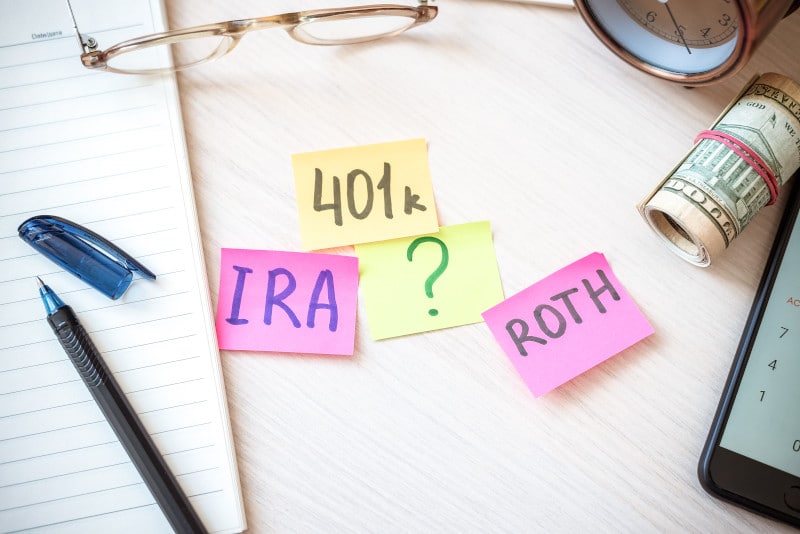
Can I Have Both a Gold IRA and a 401(k)?
Yes, you can have both a 401(k) and a gold IRA account. In fact, you could have multiple IRA accounts and, if you’ve had multiple employers, even multiple 401(k) accounts.
There’s no limit to the number of accounts you can have, just to the total amount of annual contributions, which is $7,000 annually across all of your IRA accounts ($8,000 for those over age 50), and $23,500 annually across all of your 401(k) accounts ($31,000 for those over age 50).
Whether you want to have multiple accounts, however, is something that you might want to discuss with your financial advisor.
Gold IRA Questions and Concerns
Can I Own Other Precious Metals in a Gold IRA?
Yes, your gold IRA isn’t limited just to gold. You can also own silver coins and silver bars, platinum coins and platinum bars, and palladium coins and palladium bars in your gold IRA.
How Can I Fund My Gold IRA?
You can fund a gold IRA with annual contributions, which are limited to $7,000 per year, or $8,000 for those over age 50. Or you can fund your gold IRA with a rollover from a 401(k), 403(b), TSP, IRA or similar retirement account, which isn’t subject to limits on annual contributions.
Are Gold IRA Rollovers Really Tax-Free?
Yes, gold IRA rollovers can be made tax-free, as long as you follow IRS rollover rules. Direct rollovers or transfers of assets from your existing retirement plan to your gold IRA custodian can be made tax-free.
How Can I Be Sure That the Gold I’m Buying Is Real?
Counterfeiting has always been a concern in the precious metals and collectible coin industries. Goldco works with mints around the world to source precious metals coins directly from the mints that produce them, ensuring that the gold coins or gold bars you buy from us are 100% authentic.
How Safe and Secure Is My Gold IRA?
Goldco works with established bullion depositories to store your gold IRA assets, ensuring that your gold coins or gold bars are stored safely and securely.

5 Steps to Start a Gold IRA
If you think that starting a gold IRA might be the right choice for you, you’ll be happy to know that you can start a gold IRA in just five easy steps.
1. Choose the Type of Gold IRA You Want
The type of self-directed gold IRA you set up will be dependent on how you want to fund your IRA. Most people will choose to fund their gold IRA through a rollover from an existing retirement account such as a 401(k), and they’ll often choose to open a Traditional gold IRA so that they can utilize pre-tax retirement savings.
If you’re transferring or rolling over funds from a Roth account, you will need to choose a Roth gold IRA. You can also open a Roth gold IRA if you want to do a Roth conversion.
2. Decide on a Funding Source
The funding source for your gold IRA is dependent on what type of gold IRA you open. If you open a Traditional gold IRA, you can’t fund it with transfers or rollovers from Roth accounts such as a Roth IRA or Roth 401(k). But a Roth gold IRA can be funded with rollovers from pre-tax or Roth accounts.
Numerous types of retirement accounts can be used to fund a gold IRA. You may want to check with your tax advisor before making any changes to see if there are tax implications and confirm that your current retirement accounts allow transfers or rollovers.
3. Choose a Self-Directed Gold IRA Custodian
Like any other IRA assets, gold IRA assets need to be administered by a custodian per IRS regulations. Working with precious metals specialists, like those at Goldco, can help you find a custodian experienced with gold IRAs.
Most people will choose to fund their gold IRA through a rollover from an existing retirement account such as a 401(k), and they’ll often choose to open a Traditional gold IRA so that they can utilize pre-tax retirement savings. to make sure your gold IRA is opened properly.
Once you have chosen your gold IRA custodian, you can open your gold IRA. When your gold IRA account is open, you can then start the rollover process.
4. Fund Your Self-Directed Gold IRA
Once you have opened your gold IRA, you can start the rollover process. Normally this is done by informing your plan administrator or IRA custodian of your rollover intentions.
Then you’ll sell assets in your current retirement account and roll them over into your gold IRA. Your current plan administrator or IRA custodian will normally be responsible for sending funds to your gold IRA custodian.
It can be very important to work with gold IRA specialists to make sure that the rollover process goes smoothly, that your funds end up where they’re supposed to, and that you’ve adhered to all IRS regulations. While the rollover process can be simple, if you make a mistake you may inadvertently open yourself up to tax liabilities or penalties.
After your funds have been rolled over to your gold IRA, you can then begin the process of determining which gold coins or gold bars you want to buy with those funds.
5. Select, Purchase, and Store Your Gold
Now that your self-directed gold IRA is funded, it’s time to choose which gold coins or gold bars you want to buy. Remember that certain types of gold coins aren’t eligible for IRAs.
That’s why it can help to work with partners like Goldco who offer IRA-eligible gold coins to ensure that you don’t expose yourself to taxes or penalties by inadvertently buying the wrong type of gold.
After you’ve purchased your gold coins or gold bars, they will be administered by your IRA custodian and stored at a bullion depository. This ensures that your gold is there when you need it.
Conclusion: Is a 401(k) or a Gold IRA Right for You?
Both gold IRAs and 401(k)s can be helpful in building up your retirement savings. Whether you choose a gold IRA or a 401(k), or both, is a choice that you’ll want to make after looking at your particular financial situation, your financial goals, and possibly consulting with your financial advisor.
Both gold IRAs and 401(k)s offer unique benefits that can assist you in your retirement planning. And there’s no better time to start thinking about retirement planning than right now.
If you have a 401(k) already and are looking into gold as a safe haven, portfolio diversification, or inflation hedging, a gold IRA could be one way to do that. And Goldco can help you in your gold IRA journey.
We have worked with thousands of customers who want to set up gold IRAs and buy gold coins and gold bars for those IRAs. And we have helped many of those customers navigate the gold IRA rollover process.
If you want to learn more about how a gold IRA can help you safeguard your financial future, call Goldco’s precious metals specialists today.





